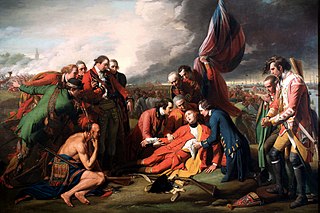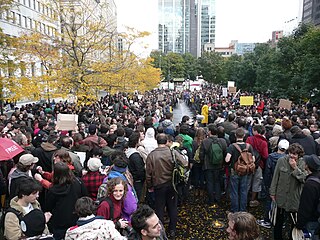 W
WEvents from the year 2011 in Canada.
 W
WThe 2010–11 North American winter refers to winter in North America as it occurred across the North American continent from late 2010 through early 2011. Influenced by an ongoing La Niña, the winter season saw winter storms and very cold temperatures affect a large portion of the continental United States, even as far south as the Texas Panhandle. Notable events included a major blizzard that struck the Northeastern United States in late December with up to 2 feet (24 in) of snowfall and a significant tornado outbreak on New Year's Eve in the southern United States. By far the most notable event was a historic blizzard that impacted areas from Oklahoma to Michigan in early February which broke numerous snowfall records, and one of the few winter storms to rank as a Category 5 on the Regional Snowfall Index.
 W
WThe 2011 Canadian Census was a detailed enumeration of the Canadian population on May 10, 2011. Statistics Canada, an agency of the Canadian government, conducts a nationwide census every five years. In 2011, it consisted of a mandatory short form census questionnaire and an inaugural National Household Survey (NHS), a voluntary survey which replaced the mandatory long form census questionnaire; this substitution was the focus of much controversy. Completion of the census is mandatory for all Canadians, and those who do not complete it may face penalties ranging from fines to prison sentences.
 W
WOn July 4, 2011, a Missinippi Airways Cessna 208 Caravan passenger aircraft with nine people on board crashed while attempting to take off from Pukatawagan Airport in Manitoba, Canada. One passenger was killed and the other eight occupants were injured.
 W
WOn August 22, 2011, Canadian New Democratic Party leader and Leader of the Opposition Jack Layton died from an unspecified, newly diagnosed cancer. Prior to his recent diagnosis, Layton led his party to gain a historic rise in seats during the 2011 federal election. His state funeral was held on Saturday, August 27, 2011 at Roy Thomson Hall in Toronto. Protocol does not mandate state funerals for a Leader of the Opposition as it does for Prime Ministers and Governors General, but Prime Minister Stephen Harper used his discretion to offer the honour, via the Governor General-in-Council, to Layton's widow Olivia Chow. Layton's death sparked a wave of mourning from Canadians of various political beliefs.
 W
WOccupy Canada was a collective of peaceful protests and demonstrations that were part of the larger Occupy Together movement which first manifested in the financial district of New York City with Occupy Wall Street, and subsequently spread to over 900 cities around the world.
 W
WOperation Mobile was the name given to Canadian Forces activities in the 2011 military intervention in Libya. The United States' counterpart to this was Operation Odyssey Dawn, the French counterpart was Opération Harmattan and the British counterpart was Operation Ellamy. The no-fly zone was proposed during the Libyan Civil War to prevent government forces loyal to Muammar Gaddafi from carrying out air attacks on anti-Gaddafi forces and civilians. The demonstrations in Libya were part of the larger Arab Spring movement that began in the country of Tunisia on 18 December 2010. When demonstrations began in Libya, the government of Muammar Gaddafi responded with systematic attacks by air and ground forces, and repression of the protesters. In a speech, Gaddafi promised to chase down the protesters and cleanse the country "house by house". Several countries prepared to take immediate military action at a conference in Paris on 19 March.
 W
WThe 2011 royal tour of Canada by Prince William, Duke of Cambridge, and Catherine, Duchess of Cambridge, took place between 30 June and 8 July 2011. The tour saw the newlywed couple visit all of Canada's regions. It was the first such tour undertaken by the Duke and Duchess since their marriage two months prior, and the first duties the couple carried out as members of the Canadian Royal Family. The tour was followed by more than 1,300 accredited media. It included the first use of the Duke of Cambridge's royal standard for Canada, the first Canadian citizenship ceremony attended by royalty, Canada Day ceremonies attended by approximately 800,000 people, and many smaller events across the country.